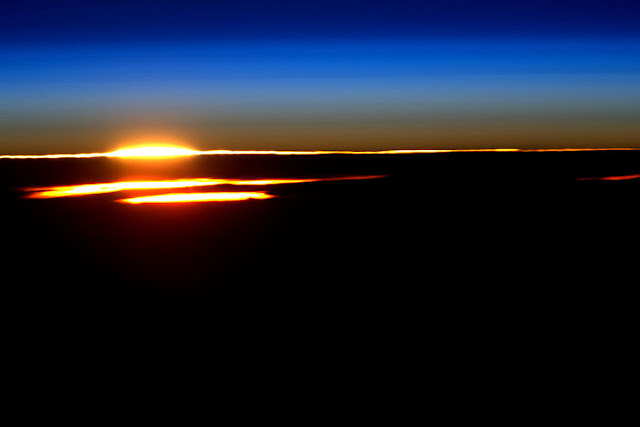Photograph by Scott Kelly / NASA
On March 27, 2015, NASA astronaut Scott Kelly launched to the International Space Station. He surpassed the previous record for time spent in space by a U.S. astronaut on Oct. 16, 2015. After his return, he will have spent a total of 520 days in space across four space missions.
During the 340 days of this mission – which spanned four space station expeditions – Kelly and his one-year crewmate, Russian cosmonaut Mikhail Kornienko, have participated in a variety of research that will help scientists better understand how the human body reacts and adapts to long-duration spaceflight. That knowledge will play a critical role in future NASA missions deeper into the solar system and on the Journey to Mars, in which a round-trip mission is likely to last 500 days or longer.
In the last 340 days, Kelly has shared hundreds of incredible photos from space on Twitter, Instagram and Facebook.
NASA recently shared a 45-picture Flickr gallery entitled, Best Pics from #c. You can find all of the stunning images below.
2
Astronaut Scott Kelly posted this photo of the polar vortex taken from the International Space Station “That #polarvortex even looks cold from here! #Burr! #YearInSpace”
3
Earth observation taken during a night pass by the Expedition 46 crew aboard the International Space Station (ISS). Astronaut Scott Kelly posted this photo on Instagram with the caption, “Day 318. Over a #Shanghai night. Wishes for a happy #ChineseNewYear! #GoodNight from @iss! #YearInSpace #LunarNewYear #YearoftheMonkey #China #earth #space #spacestation #iss”
4
Astronaut Scott Kelly posted this photo taken inside the International Space Station after a cargo delivery of fresh fruits and vegetables on Instagram with the caption, “#TuesdayTransformation Enjoying the fruits of labor, literally. #YearInSpace #zeroG #fresh #fruit #ISSCargo #HTV5 #spacefood #space”.
5
Night Earth observation of Japan taken by Expedition 44 crewmember Scott Kelly, with a Soyuz Spacecraft connected to the Mini Research Module 1 (MRM1), and a Progress Spacecraft visible. “#Goodevening #Japan. Showing @Astro_Kimiya how to take pictures of #Earth at night. #YearInSpace.”
6
Astronaut Scott Kelly posted this photo of Spain taken from the International Space Station on Instagram with the caption, “Color palette of the #Spanish coast is an appealing morning view. #GoodMorning from @ISS! #YearInSpace #colors #colorful #earth #space #spacestation #iss #morning”.
7
Earth observation taken during a day pass by the Expedition 46 crew aboard the International Space Station (ISS). Astronaut Scott Kelly posted this photo on Twitter with the caption, “Cool frozen lake in #Himalayas! #YearInSpace”
8
“Glass bottom spaceship over the #Bahamas! #GoodMorning from @Space_Station! #YearInSpace”.
9
“Of all the sunrises I’ve seen on my #YearInSpace, this was one of the best! One of the last too. Headed home soon.”
GoodMorning #Egypt! Your colors never cease to amaze!
11
#MilkyWay. You’re old, dusty, gassy and warped. But beautiful. Good night from @space_station!
12
13
Astronaut Scott Kelly posted this photo of the Hurricane Patricia taken from the International Space Station
14
NASA astronaut Scott Kelly took a photo of Houston and the Gulf Coast as the International Space Station flew overhead.
15
16
17
A Russian Soyuz spacecraft dominates the center of the view as it sits docked to the station.
18
GoodMorning to the Holy City of #Mecca #Makkah!
19
GoodMorning to those in the western #USA. Looks like there’s a lot going on down there
20
Italy and the #Alps
The above post is reprinted from materials provided by Twistedsifter. Note: Materials may be edited for content and length.


























